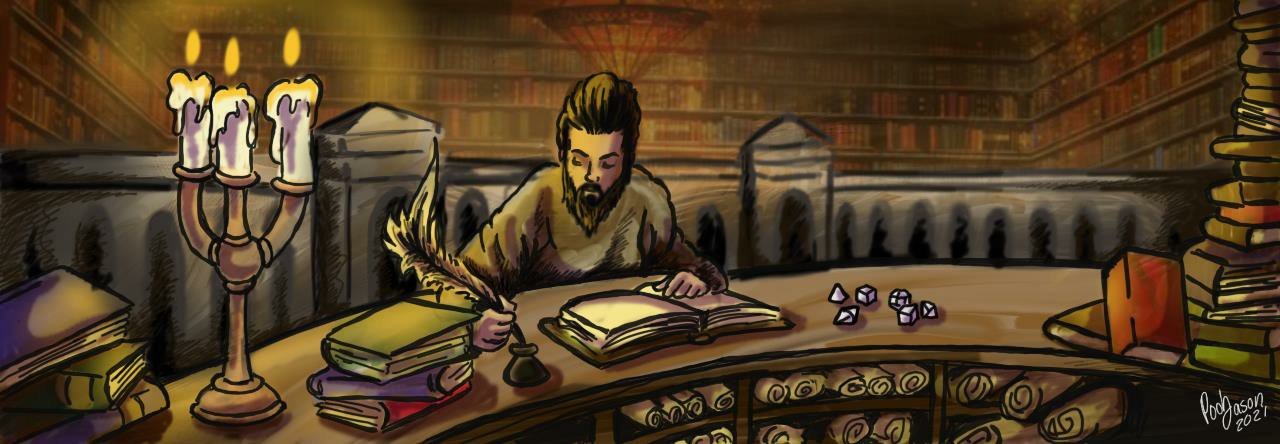What? Am I about to walk back everything I just said about infravision in my previous post? Am I about to engage in rambling hypocrisy? Nope. I still prefer to run D&D games without infravision as a character ability for demihumans like dwarves and elves. Nevertheless, I wasn’t being completely straightforward about infravision in OD&D. I didn’t lie, however. Infravision doesn’t show up, at least directly, as a demihuman ability in the three original booklets. However, a case can be made that demihumans were understood to possess infravision even in the three original D&D booklets. One just needs to refer to Chainmail.
The connection between the medieval miniature ruleset Chainmail and later D&D is well known and need not be stressed here. Simply put, there are many sections in the three original D&D booklets that assume working knowledge of Chainmail, and some sections make little or no sense without that working knowledge.
When it comes to infravision, one could argue for an established precedent in Chainmail (although the word infravision, to my knowledge, is not mentioned in Chainmail). For example, looking at the Fantasy Reference Table in Chainmail, one notes that the table has a column dedicated to a fantasy creature’s “Special Ability” or abilities. Dwarves, gnomes, and elves (as well as other creatures) are listed as having Special Ability ‘B,’ and Special Ability ‘B’ is described as: “The ability to see in normal darkness as if it were light.”
In this same table, as well as other locations scattered throughout Chainmail, one can find a precedent for other well-known D&D demihuman abilities. Hobbits/Halflings, for example, have the ability to become invisible in brush or woods in Chainmail. If a hobbit’s ability to hide in brush or gain bonuses with missile weapons carried over into D&D from Chainmail, why wouldn’t the see-in-the-dark ability of elves and dwarves carry over? While seeing “in normal darkness as if it were light” is not exactly the same as the infravision described in Men & Magic (i.e., a spell that allows “the recipient to see infra-red light waves, thus enabling him to see in total darkness.”), its overall functional result is close enough for one to argue that demihumans were understood to have “infravision,” or some kind of see-in-the-dark ability, all along.
On the other hand, there are still points to consider against this position. For example, not all of the abilities found in Chainmail found their way into D&D. A hero (i.e., a 4th-level fighting man/fighter) does not raise the morale of friendly troops in OD&D (at least not as a built-in ability). Nor does a superhero (i.e., an 8th-level fighting man/fighter) have the ability to detect invisible opponents (although both of these abilities are awesome and should be part of the fighter class!). Nor do elves have the ability to become invisible (outside of a spell).
Also, this passage from Underworld & Wilderness Adventures seems pretty clear:
In the underworld some light source or an infravision spell must be used. Torches, lanterns and magic swords will illuminate the way, but they also allow monsters to “see” the users so that monsters will never be surprised unless coming through a door. Also, torches can be blown out by a strong gust of wind. Monsters area assumed to have permanent infravision as long as they are not serving some character.
Dungeons & Dragons, Underworld & Wilderness Adventures, Vol. 3
Here, in a passage discussing how players navigate darkness in the underworld, infravision/seeing in the dark is limited to a spell or an ability possessed by monsters not serving characters. Characters are expected to use a light source or an infravision spell. Characters do not have the innate ability to see in the dark.
Nevertheless, I certainly respect how one could make an argument for both positions. There are also other details I am not including in this post. Rather, I’m just highlighting some main points that demonstrate how a case could be made for infravision as a demihuman ability in OD&D.
To be honest, I find the argument for infravision (even the briefly outlined version discussed above) compelling, and perhaps even more likely since the infravision ability for dwarves and elves quickly (re)appears in the Greyhawk supplement.
However . . . how do I say this . . . I don’t care. I still prefer games in which infravision is limited to a magical spell or a monster’s ability. I prefer to emphasize the potential dangers of delving into darkness and treating light sources as resources that need to be actively accounted for and always kept in mind as something that could run out or be lost. I make this campaign design decision openly, and all of my players know this before joining any game of mine. This approach calls to mind a line found in the opening of Men & Magic. “As with any other set of miniatures rules they are guidelines to follow in designing your own fantastic-medieval campaign.”
Peace.
